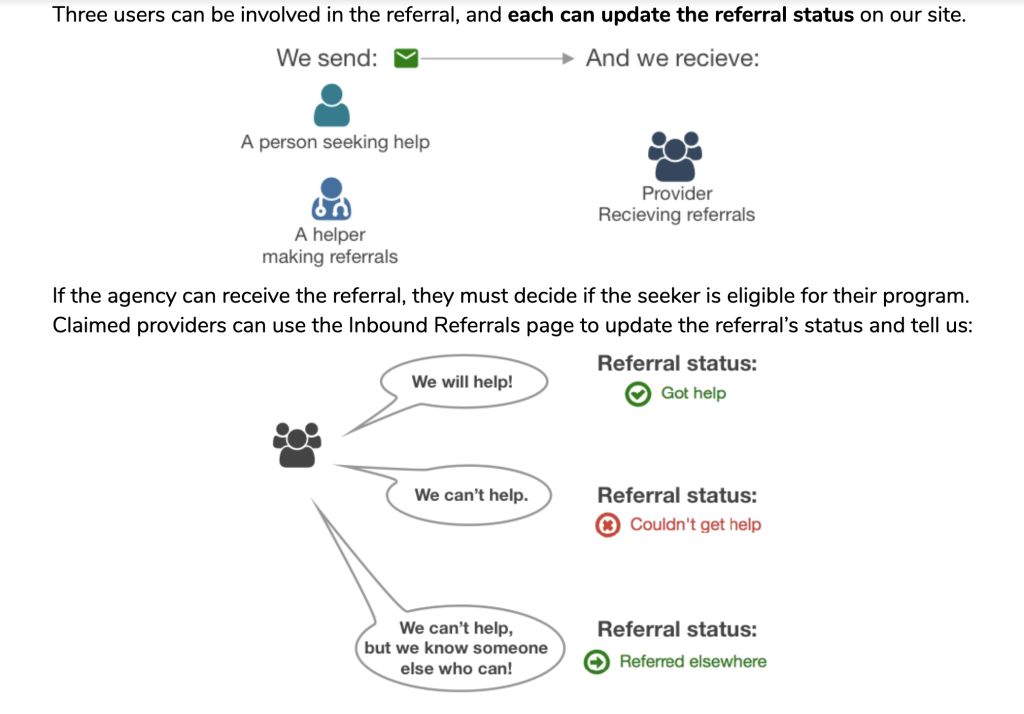Many teams had never seen or used the user-facing parts of our product. Before teams could align around making our system better for users, they needed to understand what our system does and how we could make it better.
Without understanding the product, it’s hard to see the connections between the company vision and the particular user-facing enhancements we needed to build to make that vision a reality. Before teams could align around making our system better for users, they needed to understand what our system does and how we could make it better.

I started this quarterly research report by laying out the “happy path” – the vision of how a person in need could use our system to connect to a social service and get help to fill their needs. I showed how each user group and part of the system had to interact at every step of that person’s journey to get them to help. And I laid out few of the most impactful ways that someone could fall off the happy path.
When my report came out, it started a company-wide conversation: what is our vision and what is holding us back? Within a few months the company goal was changed to align with my reports. Now that everyone understood what it took to keep people on the happy path, all of the teams united to work toward getting people help. Every team changed their team OKRs to focus on the new goal. Feature request are evaluated against our new goal, and our roadmap for the following year has incorporated many of the ideas that came to light through my analysis